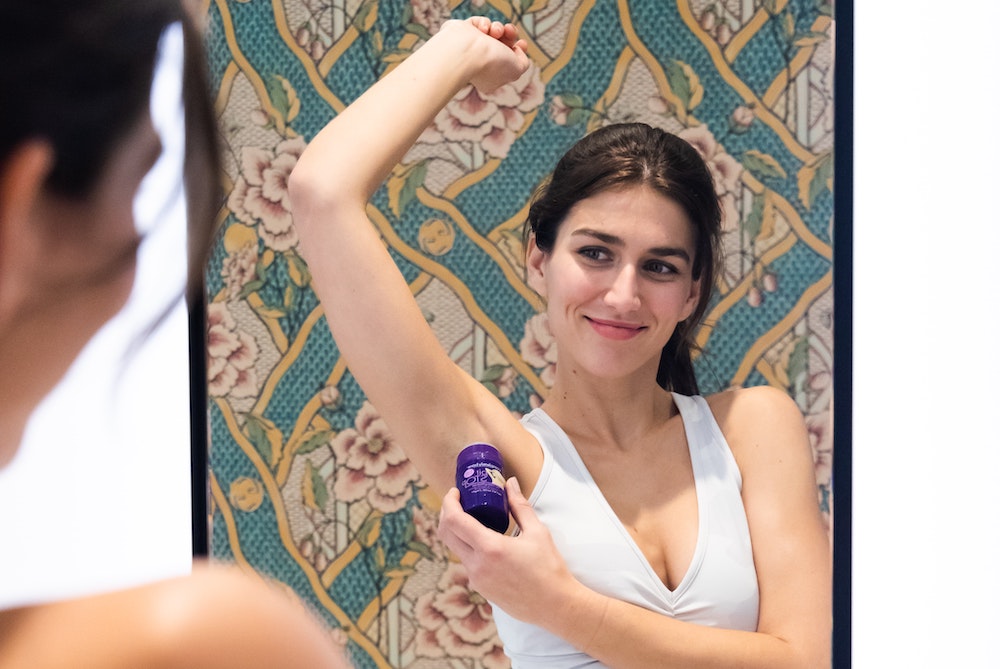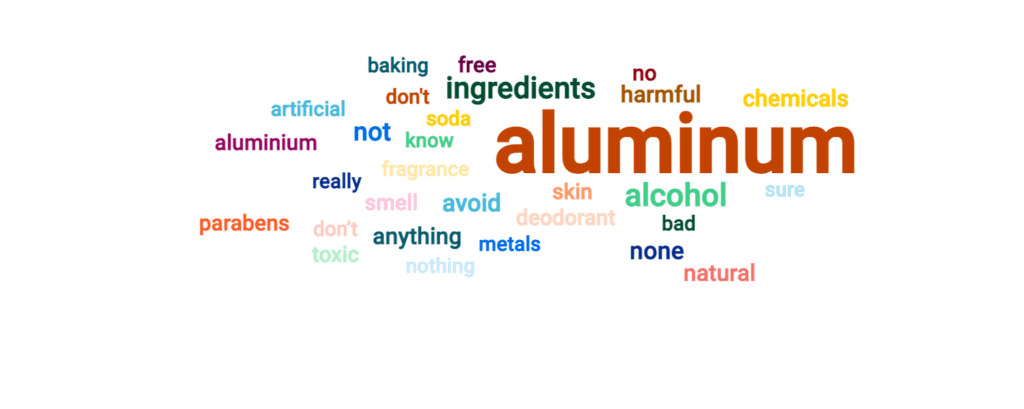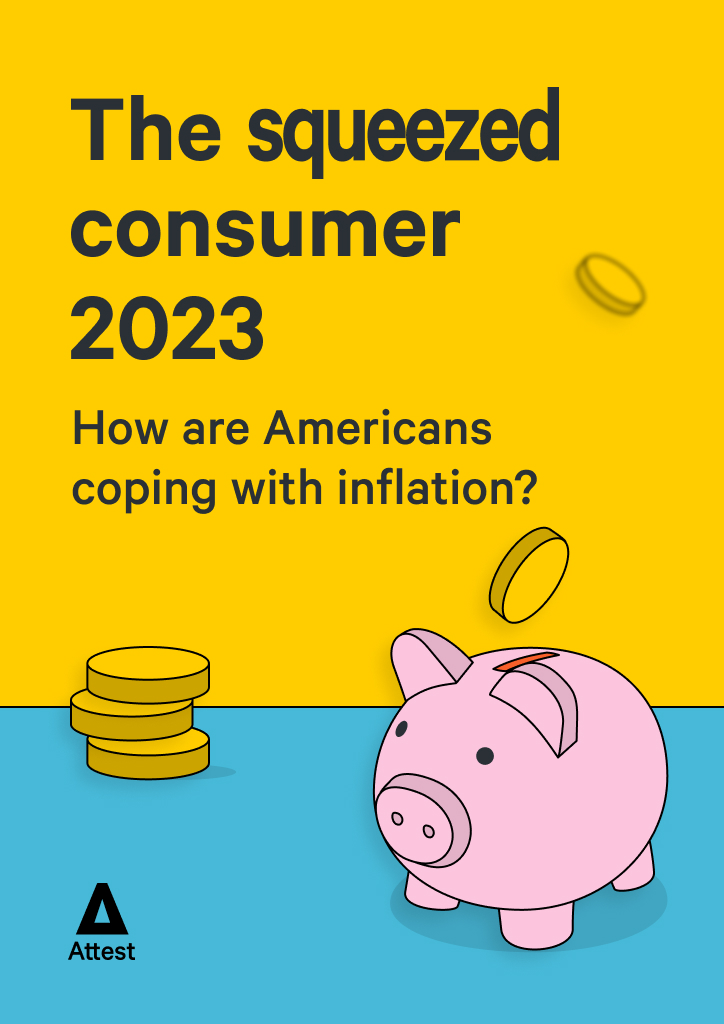How to kick up a stink with clean deodorants

I've found myself becoming increasingly curious about the 'clean' deodorant category in recent months. With awareness of products’ impact on the environment growing, it seems more and more brands are offering clean sprays and roll-ons.
For those not in the know, ‘clean’ deodorant refers to products that are free of components that could potentially be harmful to your skin or overall health. Some great examples to learn about are: Dove, Secret Deodorant, Lavanila, NATIVE and Kopari.
Why do people buy clean deodorant, and which factors most compel people to choose one emerging product over another?
We’ve run a survey of U.S. consumers to gather a clearer view of their thoughts and opinions about clean deodorant. There’s a summary of the results below, but if you want to have a nose around the full data then no sweat! You can find everything in our public insights dashboard.
Top 3 takeaways from the research
1) The most important factor when it comes to purchasing clean deodorants is product effectiveness, while reviews and recommendations are least important. This is something brands running customer advocacy and referral programs should definitely note.
2) There’s a slight gender divide when it comes to what makes an ‘effective’ deodorant. Men care more than women about using a product that smells nice, while women are most concerned that the deodorant should confidently last all day.
3) Aluminum is the ingredient buzzword to avoid. Respondents are emphatic about this being the one ingredient they don’t want to see in their clean deodorant.
Now let’s get right into the juicy data!
Results
Product effectiveness and ingredients are most important
We’ve found that ‘product effectiveness’ is the most important consideration for those purchasing clean deodorant, with 56.9% putting this in first or second place—no great surprise perhaps. However, in a very close second place is ‘ingredients’—55.8% of respondents said it was one of their top two concerns.
The fact that ‘ingredients’ ranks so high as a determining factor shows there’s clearly a high level of existing knowledge about harmful ingredients among clean deodorant buyers—people know what ingredients they do and don’t want. It’s key for brands to remember that there’s an important knowledge-building phase customers need to go through before they’ll buy.
Working our way down the list of purchase considerations we can see that ‘price’ came third. A massive 90.4% of respondents said that the price point of clean deodorant was either ‘very important’ or ‘important’ to them—they clearly aren’t prepared to pay over the odds for clean deodorant.
Something that ran counter to my expectations was ‘reviews/recommendations’ coming out bottom of the list—just 2.9% ranked this as their most important factor—when we hear so much about how important advocacy and word-of-mouth are to consumers across other sectors, notably in other environmentally conscious and/or D2C categories. Perhaps this is down to the fact that deodorant is a highly personal product—perhaps consumers are less likely to value the opinions of others and prefer to base their purchases on their own experiences, preferences and private habits.
Brands that place high importance on word of mouth and customer advocacy might want to re-evaluate their strategy. This especially applies to multi-product brands, where clean deodorant is just one of several products under one brand—this product works differently!
Men want scent; women want endurance
Respondents’ answers to the question on what criteria defines an effective deodorant also came as a surprise in this research. While I’m not amazed that men and women didn’t see eye-to-eye in terms of the most important factor—men selected ‘eliminates odor’ as their #1 while women chose ‘lasts all day’—I certainly raised an eyebrow when I saw that men were more concerned than women about having a product that ‘smells good’ (61.6% vs. 53.5%).
This challenges some stereotypes, and also underlines a key learning for brands selling products that target specific genders. Times change and so do attitudes—marketers should never be afraid to ask questions to validate (or disprove) a gut feeling. It might even open the door to enormous success, as our customer Bloom & Wild found out when they researched a hunch of theirs and delisted red roses for Valentine’s Day!
Aluminum is the ingredient consumers most want to avoid
The growing interest in clean deodorant shows that consumers are increasingly concerned about using products that don’t contain chemicals that could harm their health. They also know what it is that they want—or rather what they don’t want — when it comes to certain ingredients. The most commonly cited ingredient that our respondents wanted to avoid was aluminum, while alcohol also ranked highly in respondents’ answers. It’s fascinating to see just how high consumer awareness is, across this range of harmful or disagreeable ingredients.

Looking at the packaging for many of the most commonly purchased products in this category, the top 5 best-known brands all make very clear reference to their aluminum-free formula. There are evidently ingredients that Americans want to steer clear of, so brands would do well to listen to customer concerns in this area—especially with products that target women.
Females actually ranked ingredients as being more important than product effectiveness—37.4% vs. 28.1% for men—with this preference most pronounced among respondents from Gen Z.
Tell us what you think of this article by leaving a comment on LinkedIn.
Or share it on:

